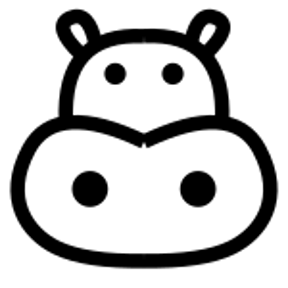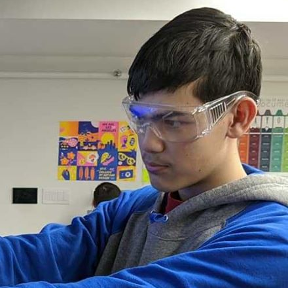Welcome to the Onshape forum! Ask questions and join in the discussions about everything Onshape.
First time visiting? Here are some places to start:- Looking for a certain topic? Check out the categories filter or use Search (upper right).
- Need support? Ask a question to our Community Support category.
- Please submit support tickets for bugs but you can request improvements in the Product Feedback category.
- Be respectful, on topic and if you see a problem, Flag it.
If you would like to contact our Community Manager personally, feel free to send a private message or an email.
Find duplicate vertices in an array?
 EvanReese
Member, Mentor Posts: 2,697 PRO
EvanReese
Member, Mentor Posts: 2,697 PRO
Anyone have a good suggestion on finding duplicate vertices in an array? Id like to find them and be able to remove duplicates.
I was considering looping over the whole array, and comparing each item to a copy of the array with that item removed in a nested loop. Is that a decent direction or is there a simpler way?
I was considering looping over the whole array, and comparing each item to a copy of the array with that item removed in a nested loop. Is that a decent direction or is there a simpler way?
0
Best Answers
-
 _anton
Member, Onshape Employees Posts: 507
_anton
Member, Onshape Employees Posts: 507  Easy (quadratic) algorithm is to make a result array, iterate over the input array, check if the current vertex is within a tolerance of any of the verts in the result array - if not, then append to the result array. Performance with modestly-sized input should be all right.1
Easy (quadratic) algorithm is to make a result array, iterate over the input array, check if the current vertex is within a tolerance of any of the verts in the result array - if not, then append to the result array. Performance with modestly-sized input should be all right.1 -
 Alex_Kempen
Member Posts: 258 EDU
deduplicate won't work for vertices, as deduplicate uses map key access (so ==) for comparison, not tolerantEquals. Practically speaking, == is probably okay, but there are edge cases like selecting a vertex in sketch A and a vertex in sketch B which has been coincidented to the vertex in sketch A where == will fail.
Alex_Kempen
Member Posts: 258 EDU
deduplicate won't work for vertices, as deduplicate uses map key access (so ==) for comparison, not tolerantEquals. Practically speaking, == is probably okay, but there are edge cases like selecting a vertex in sketch A and a vertex in sketch B which has been coincidented to the vertex in sketch A where == will fail.
The best alternative to deduplicate is likely qUniqueVertices, although that requires you to have original queries. Otherwise, clusterPoints should do the trick. If you do use it, you'll probably want to pass `TOLERANCE.zeroLength * meter` as the tolerance, and note the output is of the following form:
Given an input `[vertex a, vertex b, vertex c, vertex a]`, clusterPoints will return `[[0, 3], [1], [2]]`. Hopefully it's clear how you can convert the given result back into a list of vertices.
Software Developer at Epic Systems
FRC Design Mentor - Team 1306 BadgerBots3 -
 EvanReese
Member, Mentor Posts: 2,697 PRO
Here's what I ended up going with. Thanks, Alex!
EvanReese
Member, Mentor Posts: 2,697 PRO
Here's what I ended up going with. Thanks, Alex!/** * Takes an array of vectors and returns it with duplicates removed. */ export function deduplicatePoints(points is array) returns array { const pointClusters = clusterPoints(points, TOLERANCE.zeroLength * meter); var result = []; for (var pointCluster in pointClusters) result = append(result, points[pointCluster[0]]); return result; }
2

Answers
https://cad.onshape.com/FsDoc/library.html#deduplicate-array
https://thesmoothcut.com/
That's exactly what I'm looking for, and Anton, thanks for the rundown. That makes sense too. I was searching for it with autocomplete, but it wasn't there because deduplicate() isn't part of common.fs or geometry.fs. Thanks!
The Onsherpa | Reach peak Onshape productivity
www.theonsherpa.com
The best alternative to deduplicate is likely qUniqueVertices, although that requires you to have original queries. Otherwise, clusterPoints should do the trick. If you do use it, you'll probably want to pass `TOLERANCE.zeroLength * meter` as the tolerance, and note the output is of the following form:
Given an input `[vertex a, vertex b, vertex c, vertex a]`, clusterPoints will return `[[0, 3], [1], [2]]`. Hopefully it's clear how you can convert the given result back into a list of vertices.
FRC Design Mentor - Team 1306 BadgerBots
I totally didn't forget about these and just didn't want to steal your thunder.
/** * Takes an array of vectors and returns it with duplicates removed. */ export function deduplicatePoints(points is array) returns array { const pointClusters = clusterPoints(points, TOLERANCE.zeroLength * meter); var result = []; for (var pointCluster in pointClusters) result = append(result, points[pointCluster[0]]); return result; }The Onsherpa | Reach peak Onshape productivity
www.theonsherpa.com